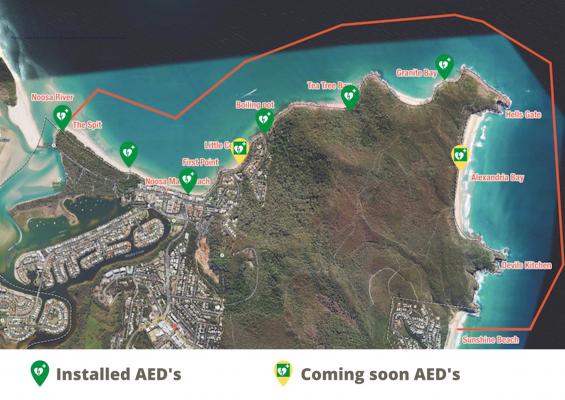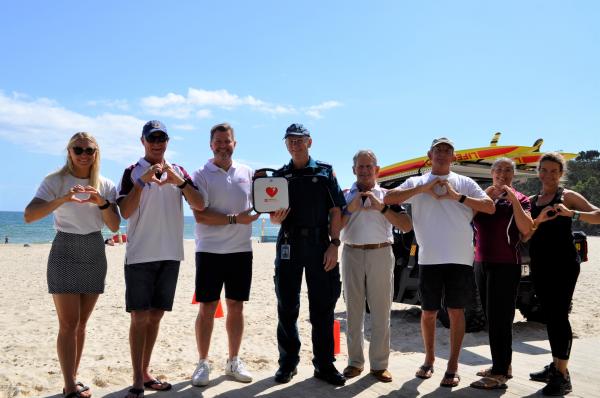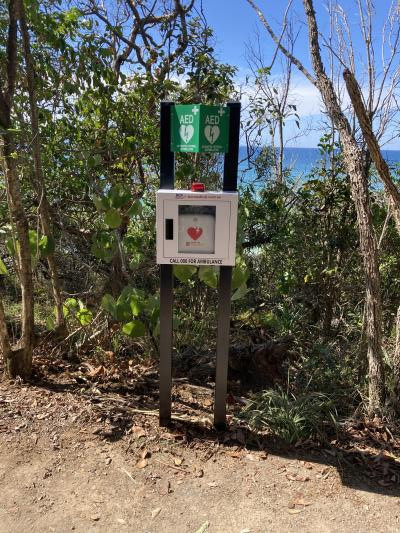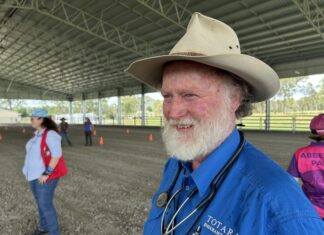Noosa’s ambitious beach defibrillator project, which has now made it one of the safest coastal strips in the country, was celebrated with a media call for stakeholders and donors last week.
The project, a joint initiative of Noosa Heads Surf Club, Noosa World Surfing Reserve and BCR Medical, with the support of Queensland Parks and Wildlife and Queensland Ambulance Service, has now installed six defibrillator stations (AEDs) between the river mouth and Granite Bay, with two more coming at Alexandria Bay and Little Cove. The AEDs, strategically placed at the base of the towers at the river mouth and Main Beach, and at intervals along the coast track in Noosa National Park, now make it feasible for cardiac arrest first responders to act on the victim within the life or death three-minute mark anywhere in the surfing reserve.
Newly-elected president of the World Surfing Reserve Kirra Molnar said the challenge now, along the coastal strip and at many other Noosa locations, was to create public awareness of the AED locations.
“We’re starting an awareness campaign through social media as a first step, but we’re also looking at creating an app that will pinpoint the closest station to the incident,” Kirra said. She also praised the generosity of corporate and private donors who helped fund the project.
Donors Rob Warburton and Jahna Pearce of Coastal Dry Cleaners and Launderers, who were part of the group that funded the Tea Tree Bay AED installed in September, were present for the media call.
Said Rob: “Shortly after two friends suffered heart attacks in the surf, we heard about the two people who died at Tea Tree because there wasn’t a defibrillator close enough, and decided to see if we could change that. Seeing the actual defibrillator going in a month or so ago made it real for all of us, and the directional signage is really important too, because people need to be made aware of where they are.”
Noosa Surf Club president Ross Fisher said: “The placement of these AEDs [on Main Beach] will ensure that their accessibility will be a huge boost in Noosa’s ongoing efforts to improve safety for all, and will vastly improve the time in an emergency to get one onto a patient to improve their chance of survival.”









